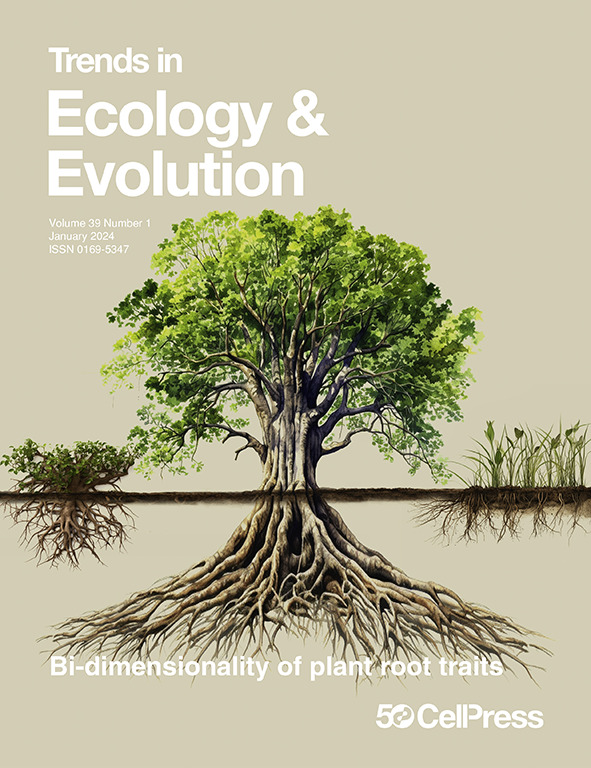在共生体群落中寻找促进作用。
IF 16.7
1区 生物学
Q1 ECOLOGY
Trends in ecology & evolution
Pub Date : 2024-09-01
Epub Date: 2024-08-06
DOI:10.1016/j.tree.2024.07.009
引用次数: 0
摘要
宿主相关生物(即共生体)通常在其共同宿主体内相互作用,形成复杂的生态群落。在这里,我们认为宿主内促进作用,即一个共生体群体的存在促进另一个共生体群体的建立、生长或繁殖,是普遍存在的现象,可由六种基本机制产生,并对生态系统动力学具有广泛的影响。本文章由计算机程序翻译,如有差异,请以英文原文为准。
On the hunt for facilitation in symbiont communities.
Host-associated organisms (i.e., symbionts) commonly interact within their shared hosts to form complex ecological communities. Here we suggest that within-host facilitation, where the presence of one symbiont group promotes establishment, growth, or reproduction of another, is prevalent, can arise from six fundamental mechanisms, and has broad implications for ecosystem dynamics.
求助全文
通过发布文献求助,成功后即可免费获取论文全文。
去求助
来源期刊

Trends in ecology & evolution
生物-进化生物学
CiteScore
26.50
自引率
3.00%
发文量
178
审稿时长
6-12 weeks
期刊介绍:
Trends in Ecology & Evolution (TREE) is a comprehensive journal featuring polished, concise, and readable reviews, opinions, and letters in all areas of ecology and evolutionary science. Catering to researchers, lecturers, teachers, field workers, and students, it serves as a valuable source of information. The journal keeps scientists informed about new developments and ideas across the spectrum of ecology and evolutionary biology, spanning from pure to applied and molecular to global perspectives. In the face of global environmental change, Trends in Ecology & Evolution plays a crucial role in covering all significant issues concerning organisms and their environments, making it a major forum for life scientists.
 求助内容:
求助内容: 应助结果提醒方式:
应助结果提醒方式:


